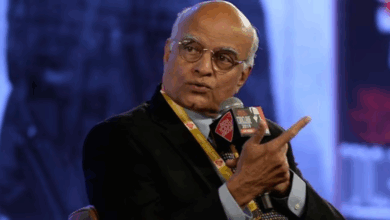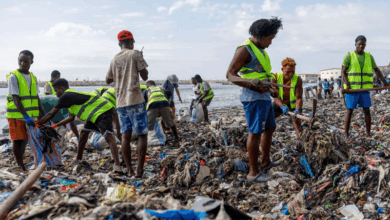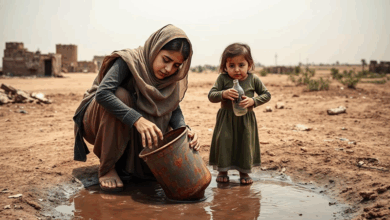
The G7 summit in Canada, hosted for the first time by Mark Carney, featured a meticulously organized agenda. The ongoing conflict between Israel and Iran and US President Donald Trump’s abrupt exit disrupted that programme. Nonetheless, Carney mentioned on Tuesday that this summit “has the potential to initiate a new phase of collaboration that fosters enduring resilience rather than immediate efficiency.”
5 key takeaways from the G7
Trump’s sudden exit
On Tuesday, the G7 nations – Italy, the US, France, Germany, the UK, Canada, and Japan – were missing one leader after Trump’s unexpected choice to leave the summit early and head back to Washington DC. Attendees tried to maintain a positive outlook regarding the sudden exit. Prime Minister Carney expressed complete understanding of the president’s choice, while French President Emmanuel Macron deemed a reporter’s question about the group now being a de facto G6 as “disrespectful.” Trump indicated that he departed due to the quickly developing situation between Israel and Iran.
The White House asserted that the president experienced a “great day” in Alberta and accomplished a lot during the visit. Treasury Secretary Scott Bessent remained to represent the United States. Nonetheless, it indicated that Trump skipped scheduled bilateral discussions with Ukrainian President Volodomyr Zelensky, Australian Prime Minister Anthony Albanese, and Mexican President Claudia Sheinbaum (although he later communicated with her by phone, according to the White House.) Denisse Rudich, director of the G7 Research Group London, stated that Trump’s exit was not inherently negative.
Israel-Iran conflict distracts from priorities.
By Tuesday, a significant portion of global focus had moved from the resort in the Canadian Rockies to the escalating conflict in the Middle East and the uncertainty regarding possible actions by the US. The conflict also dominated much of the summit’s first day, as G7 leaders worked to reach a consensus on their response to the regional tensions.
Ultimately, all seven, including the US, issued a statement calling for a “de-escalation of hostilities in the Middle East, including a ceasefire in Gaza” – although it refrained from demanding a ceasefire between Israel and Iran. Trump later accused the French president of “seeking publicity” with his claim that the US was striving for a ceasefire. On Tuesday, Macron stated that it was Trump who brought up that possibility. Regardless of the back and forth, the declaration demonstrated a sense of unity.
Ukraine, India, and diplomatic relations
Regarding Ukraine, Zelensky will exit this summit with fresh assistance from Canada, yet without a significant joint support statement.
Reports indicated that Canada had abandoned plans for a firm statement regarding the war due to US opposition. When questioned about this, Carney refuted the idea of a lack of consensus and referenced comments on Ukraine in the summit chairman’s concluding statement. In that statement, the G7 “voiced backing for President Trump’s attempts to attain a fair and enduring peace in Ukraine” and urged Russia to consent to a ceasefire. It also mentioned they “are determined to explore all avenues to increase pressure on Russia, including financial sanctions” – a stance that Trump has opposed. Another result is expected to create tension for Carney domestically. The presence of Indian Prime Minister Narendra Modi at the summit created tension among Sikh Canadians.
Carney’s office announced that India and Canada have consented to reinstate diplomatic services following the expulsion of senior diplomats from both nations. Another result is expected to create tension for Carney domestically. The participation of Indian Prime Minister Narendra Modi in the summit created a source of conflict for Sikh Canadians.
Carney’s office announced that India and Canada had come to terms on reinstating diplomatic services following the expulsion of key diplomats from both nations. This came after Ottawa alleged that New Delhi government operatives had participated in the assassination of a Sikh separatist leader in Canada. As per a summary of the discussion between Carney and Modi, he brought up “transnational crime and repression, security, and the rules-based order” during their talk.
Nonetheless, Carney, who previously served as the central bank governor for Canada and the UK, entered his inaugural G7 summit as prime minister and host with a targeted agenda and departed with collective declarations on artificial intelligence and quantum computing, migrant trafficking, essential minerals, and various other matters.
“The method was ‘brief, thorough, and focused on action – one can envision the banker,’ stated Ms. Rudich.”
She praised the “outcomes oriented” method of diplomacy, highlighting the instance of a pact to enhance international collaboration on wildfires “without directly mentioning climate change”.
Carney’s trade objectives…
A highly anticipated moment of the summit was the meeting between Trump and Carney. The two nations were said to be nearing a trade and security agreement following discussions initiated last month to settle their ongoing tariffs conflict. Trump mentioned that obstacles persist – he identifies as a “tariff person”, while Carney “holds a more intricate perspective”.
However, those discrepancies are not unmanageable, as indicated by a statement from Carney’s office, which mentioned that the “leaders consented to engage in negotiations aimed at reaching a deal within the next 30 days.” Regarding that timeline, the prime minister asserted he will seek an agreement “in the best interests of Canada and in line with US interests.”
The G7 allowed Carney to present to various world leaders about trade relations with Canada. The prime minister aims to establish Canada’s economy as the strongest in the G7 while striving to lessen his country’s significant economic dependence on the US.
On Tuesday, European officials stated they were nearing a defence procurement agreement with Canada, which aims to lessen its reliance on American equipment.
….and Trump’s
Trump was open about one thing he wanted from the summit: trade deals.
While Carney didn’t walk away with one, British Prime Minister Sir Keir Starmer and the US leader were all smiles after bringing into force parts of a tariff agreement they sealed last month. Plenty of other leaders in attendance were keen to pin down the president on his tariffs and trade.
Like Canada, Japanese Prime Minister Shigeru Ishiba and Trump failed to reach a breakthrough but agreed to push ahead with trade talks.”We’ve been exploring the possibility of a deal down to the wire, but there are still points where our views remain divided,” Ishiba told reporters.
There is some pressure on the US end as well – Trump has promised deals by his own 9 July deadline that marks the end of a 90-day pause on his “Liberation Day” tariffs. European Commission President Ursula von der Leyen stated that the current trade negotiations between the US and the EU were “complicated,” yet were “progressing,” aiming for an agreement by July.






